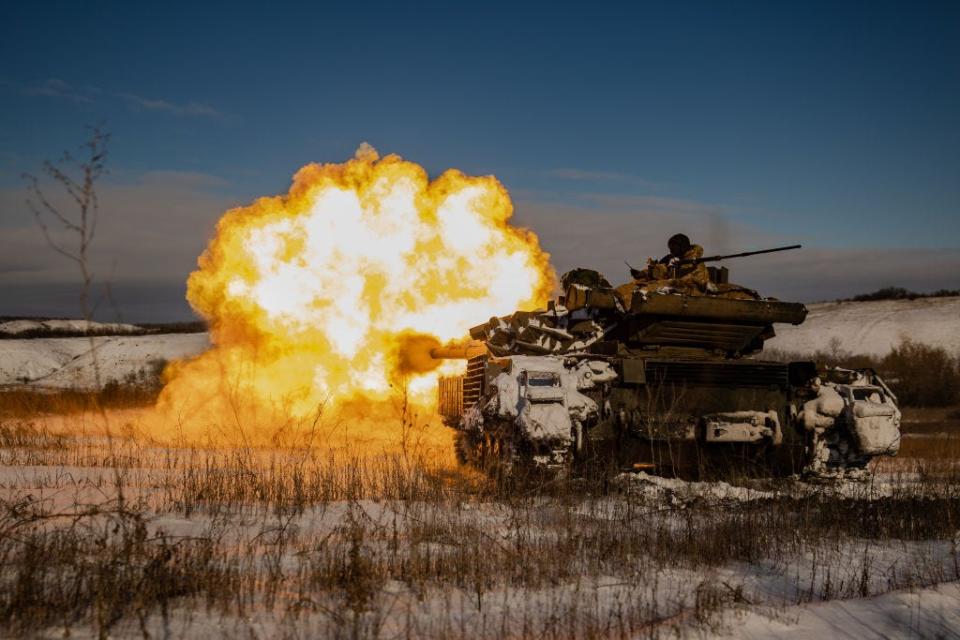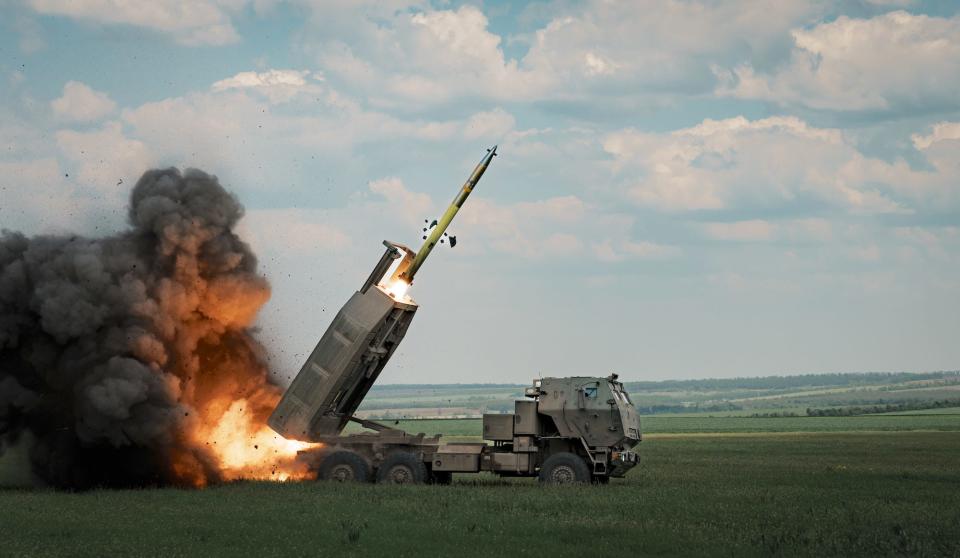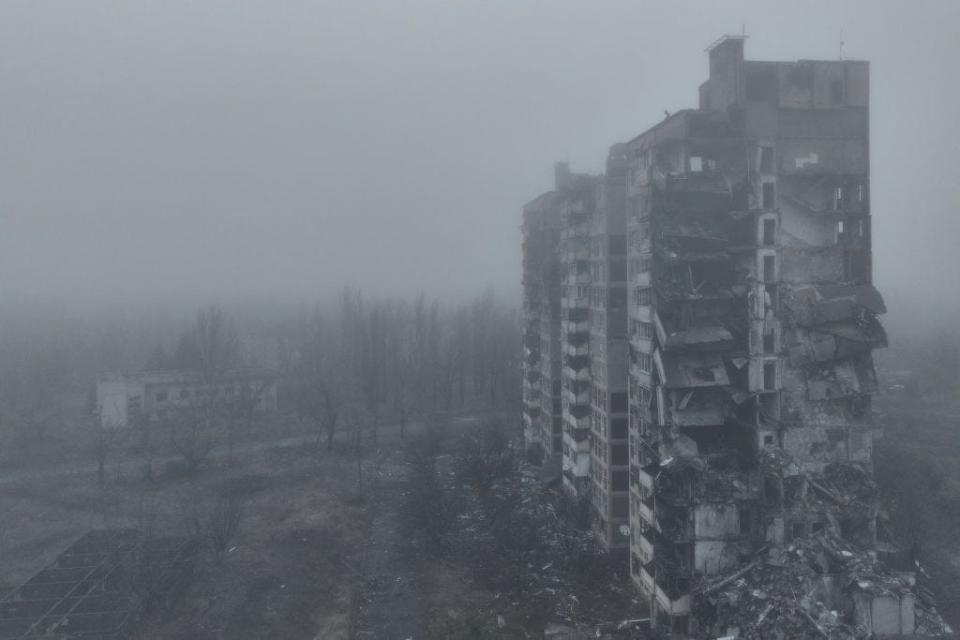-
Ukraine needs artillery and ammunition rather than tanks, a US veteran there said.
-
He said Ukraine has been rationing supplies and not hitting targets.
-
While vehicles are “important” shortages mean Ukraine needs what can keep soldiers alive now.
An American veteran fighting in Ukraine said soldiers are desperate for artillery and ammunition. He doesn’t care about getting more expensive equipment like tanks right now because that isn’t what they need most.
Jonathan Poquette told Business Insider that Ukraine’s ammunition shortages mean its soldiers have had to become much more picky about what targets to hit, even sometimes not engaging groups of advancing Russians that they would have hit earlier in Russia’s invasion.
And as he watches Ukraine’s allies debate what further aid to give Ukraine, he has a clear plea.
“With the West, you see so much stuff about, ‘Oh yeah, they’re donating these vehicles, these vehicles, these vehicles.’ And it’s like, bro, I don’t give a fuck about the vehicles to a certain extent.”
“Give me bullets, give me mortars, give me artillery, give me things that’ll allow the individual soldiers to fight and kill the Russians.”
Poquette is a sniper with Chosen Company — an international force within the Ukrainian army’s 59th Motorized Brigade officially designated as a recon unit but often used more for front-line assaults and defensive missions — and has been recovering from an injury in Kyiv since the end of January.
He said that long-running shortages of weaponry and equipment means the weapons that can keep soldiers alive and stop Russia from taking territory are needed more urgently than anything that can help longer-term planning or aid long-distance attacks.

He said that while expensive vehicles like tanks “do matter, I think it overshadows the complete picture.”
What matters right now is “ammunition, grenades, claymores or other types of mines, rockets, various different rocket systems.”
“What can one tank do?” he asked rhetorically, saying: “Not as much as 50,000 artillery shells, 5,000 mortar shells.”
Not enough ammunition
He said that with enough ammunition, when Russia sends waves of men, “we could literally just smash them to pieces.”
But he said there simply is not enough. He said that when turning over a position to another group, the soldiers taking over from him would ask for his ammunition and grenades.
“That’s how desperate it was getting, to where literally just before we leave, we’re taking all our magazines and out all the bullets and then putting empty magazines back in our kit and then taking all our grenades and it’s like ‘Here, you guys need it.'”
Ukraine has received tanks and armored vehicles from allies, but they arrived after long debates over whether to send them. Many war analysts have said the delay meant Russia had more time to prepare for their arrival, making them less effective for Ukraine.
Artillery and ammunition have had a much more decisive impact on the battlefield.
Insufficient help from allies
Ukraine is suffering from critical shortages as House Republicans in the US stall $60 billion worth of further aid to Ukraine. That package includes nearly $14 billion for Ukraine to purchase weapons and munitions.
And while help from European nations continues, many say they don’t have enough equipment in their arsenals to fix Ukraine’s dearth.
Germany announced this week that it will give Ukraine 10,000 artillery rounds in the coming days, but that’s a tiny amount of what Ukraine needs: Conflict analysts said last month that Ukraine “needs around 75,000–90,000 artillery shells per month to sustain the war defensively, and more than double that – 200,000–250,000 – for a major offensive.”
Some wider plans are also underway, including a Czech Republic-led plan to source ammunition from outside of the EU, which sources told The Guardian will start delivering shells to Ukraine before June.
But the effect of the shortages, Poquette said, is that soldiers are rationing their ammunition.
Ukraine has to pass on some targets
He said they stopped firing on small groups of advancing Russian soldiers like they would have earlier in the conflict.
“It started getting to the point to where if the group was small enough that was assaulting, then the Ukrainians would evaluate it and be like, well, it’s only two or three guys, maybe four, is that really worth an artillery round or a mortar round?”
Instead, they would consider if infantry could take them on. That strategy puts greater risks on Ukraine’s soldiers.
He said his unit had to become far more choosy when it came to hitting targets with US-provided HIMARS, a game-changing weapon when it first arrived in Ukraine.


Ukraine would be in “a much better place” if it weren’t dealing with the shortages, he said.
He said the US is “somewhat responsible for our lack of ability to hold ground,” though he added that he thinks some poor Ukrainian tactics and actions have at times hampered its progress.
And the problem is wide: European officials have spent months acknowledging the continent’s insufficient ammunition production. The European Commission earlier this month announced $540 million to fast-track arms manufacturing, including artillery ammunition.
Can’t plan for the future
Poquette said the issue with Western aid is that it has come in “tidbits,” with long debates before certain equipment is sent and different levels of support arriving in different packages.
He asked “how much more would we have been able to achieve?” in the summer 2022 offensive in which Ukraine was successful at taking back swathes of territory before, Poquette said, it was “stalled” due to a lack of equipment.
He said “it feels like everything that we’ve been getting has been either too late or it’s just enough to barely hold on to where it feels like whenever they donate things, it’s kind of just enough to keep Ukraine standing, but without thought of the long term.”
That means Ukraine’s soldiers often have to plan for survival, rather than long-term success. That’s where they’re at right now.
He described Ukraine as trapped in a cycle of not getting enough Western help to plan ahead when it gets new aid: “These rounds are going to be good for two months, but what about five months from now and then five months later goes by and it’s just right back to the same thing. Well, we’re short again on rounds.”
It is an issue many in the West point to, including the prime minister of Ukrainian partner Lithuania, who told BI last month it was “so sad” to watch the same scenario repeatedly play out.
She said this includes when Ukraine’s allies say they will not give it an advanced type of weaponry it’s asking for, afraid of provoking Russia, only to do so months later, when many Ukrainians have died and the weapon may not be as relevant anymore.
Poquette’s concerns about ammunition echo the deep problems Ukraine is facing.


Ukraine pulled out of the town of Avdiivka in February, giving Russia its first major victory in months. The White House said it was because Ukraine’s soldiers had to ration ammunition “due to dwindling supplies as a result of congressional inaction.”
In January, Ukraine’s defense minister said his forces could only fire a third of what Russia could fire every day.
Ukraine has been increasing its own weapons manufacturing, but Russia has, too. Experts say Russia has huge manpower, materiel, and industrial advantages here with a much larger population and far more resources.
Read the original article on Business Insider
Source Agencies


